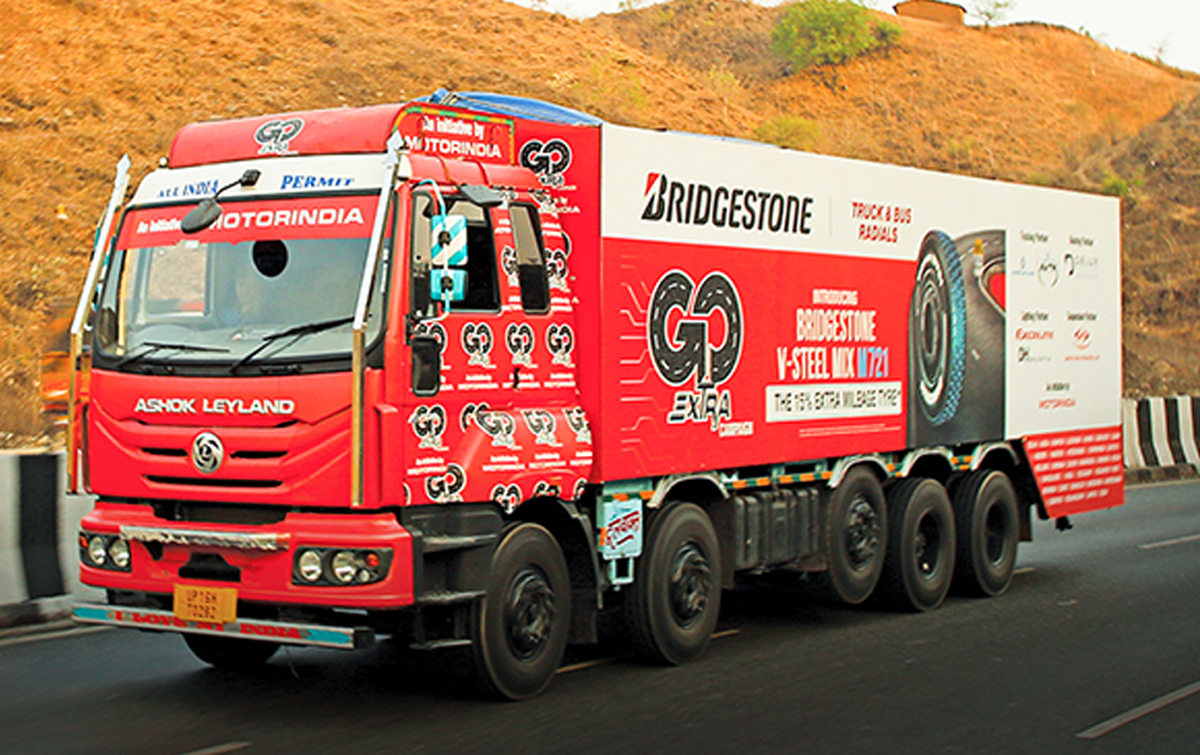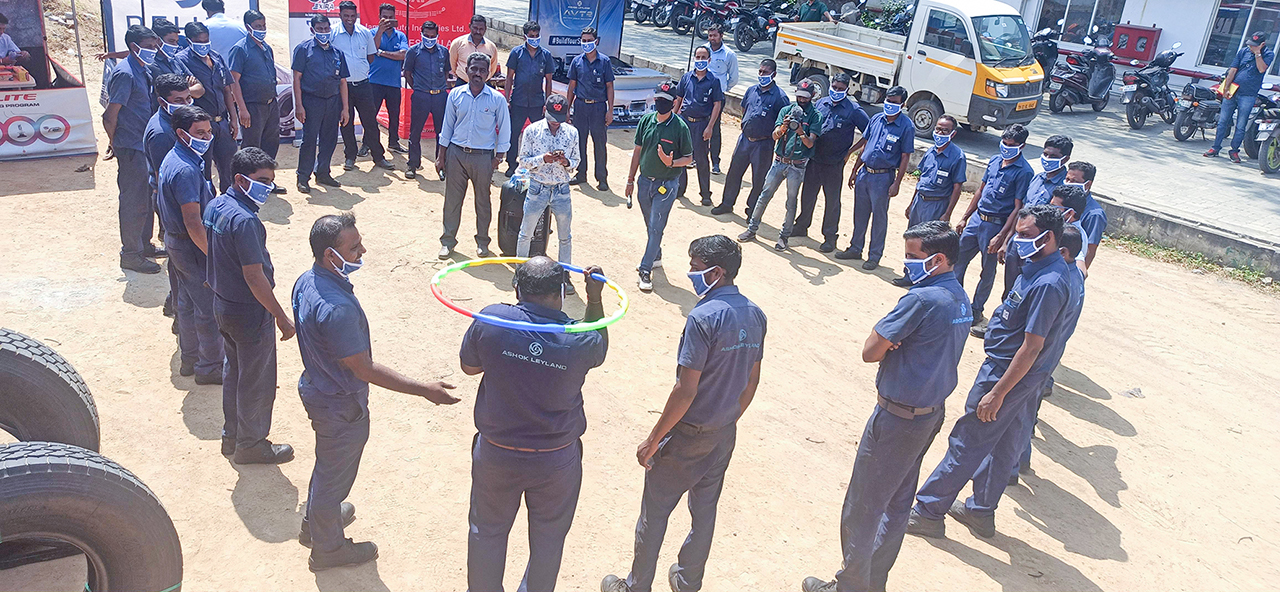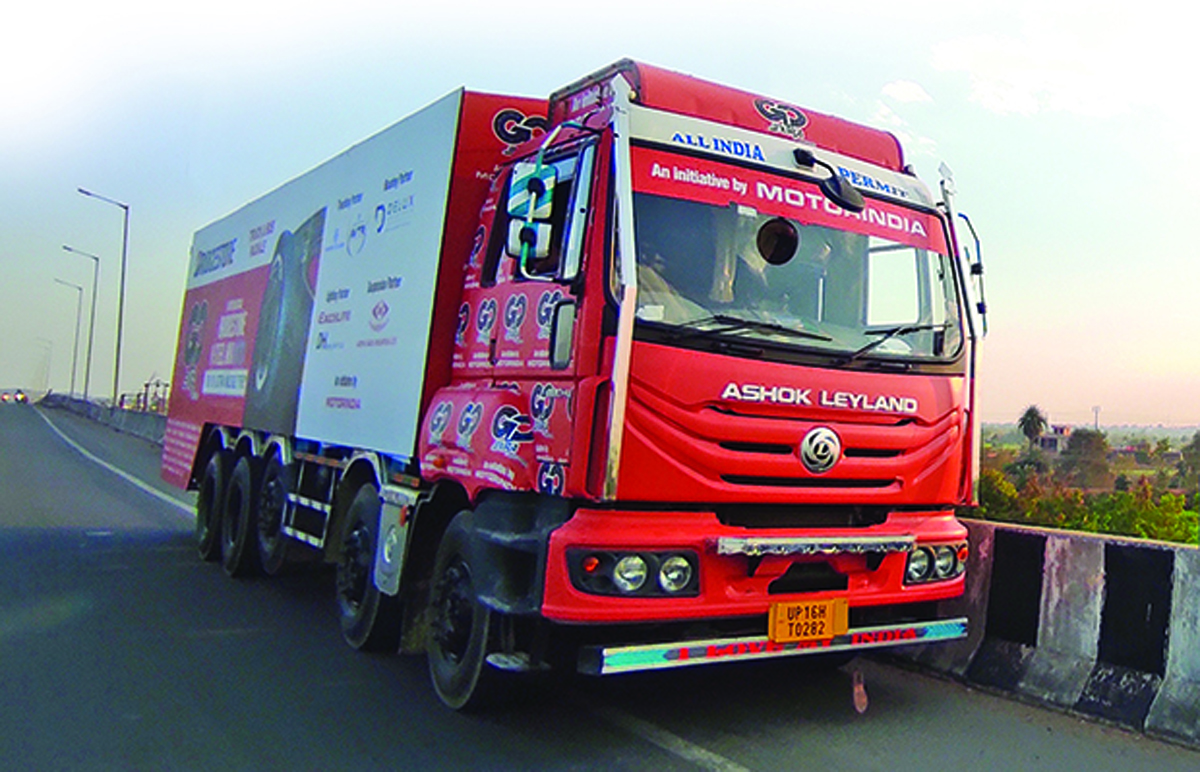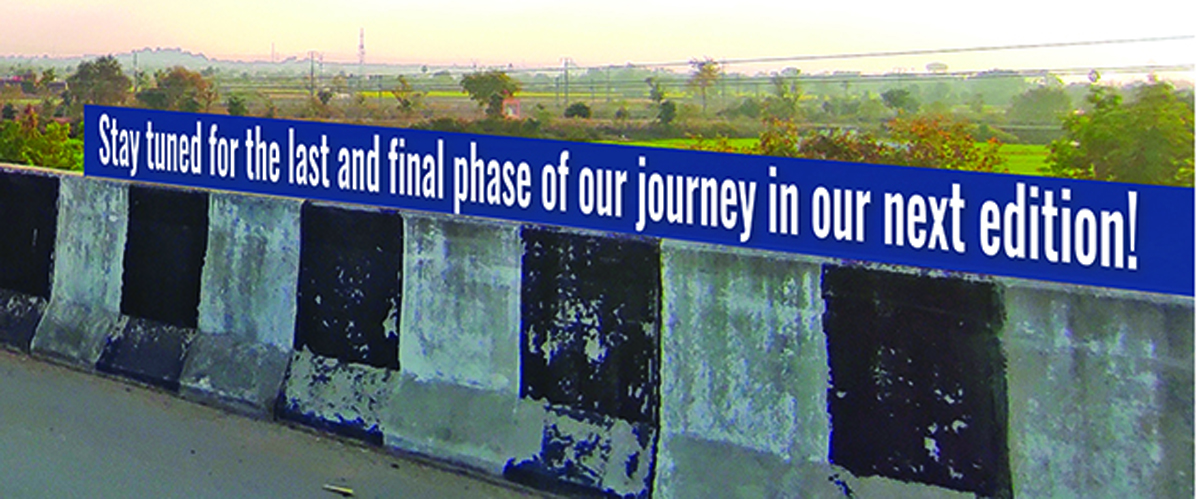Campaign Planning: Avijit Lahiri | Words: Shiv Arora | Photos: Rajeev Bhendwal
Continuing from where we left off from our last two editions, in this edition, we take you into our expedition through the splendorous beauty of South India. Having had our share of enjoyment in Chennai, our mission now was to proceed towards Vellore on Saturday, February 20. It was not a part of our planned journey but we wanted to catch an extra mile with the Go Extra campaign. All of us got ready early morning by 7:45 am and our Editor R. Natarajan joined us from the location where the AVTR truck was parked. Vellore, everyone warned us, would be very hot. Fortunately though, we were welcomed by a windy, cloudy day. The event in Vellore turned out to be as lively as in the other earlier cities and one of the additional tasks we undertook was to get the AVTR washed at a car wash centre. It now shone and sparkled, as good as new.
Our next location was Salem where we were going to pitch our base for two days of campaigning. It was at a distance of almost 230 km and took us about five hours to reach. It was on a beautiful morning of February 22 that we arrived at Salem, located on the river Thirumanimuthar. Salem is also known as Steel City. We had a spectacular day that also included in-depth interaction with P Krishnaswamy and C Dhanraj, the office-bearers of the Salem District Lorry Owners Association. Salem, incidentally, also offers very good meals and we certainly were in need of one after a long day of various events. On February 23 we pitched an event in the Karuppar region of Salem with the Ashok Leyland Service Centre as our venue.
The employees of the centre participated in all the games and activities that we had planned for the day. Our lunch was at a restaurant managed solely by women – cheers for women empowerment! Later we all went to see Yercaud, a hill station located about 25 km away from Salem. Perched in the Shevaroy hills of Tamil Nadu, it is a highly visited tourist attraction, renowned for its splendid exquisiteness, verdant greenery and coffee plantations. It experiences salubrious climate all through the year and offers a great opportunity to tourists to relish its striking scenic beauty, which is spectacular and amazing.

Steeped in raw natural attractions and a rustic aesthetic, the destination is set at an altitude of 4,970 feet above sea level. From flora and fauna to an air of freshness and purity, Yercaud is also called the ‘Ooty of the Poor’, given its low-cost tourism. The hill station is seemingly enveloped under picturesque skies above dense forests that grow coffee, spices and fruits, with oranges in abundance. It houses some famous parks and gardens proffering floral masterpieces, like Anna Park and Rose Garden to name a few. Yercaud, discovered in the 19th century by the Britishers, also boasts of some stunning vantage points that help tourists soak in the beauty of the town.
Having had our fill of nature, we left for Namakkal the next day, located 53 km away from Salem. It was a drive of about 1.5 hours and the event venue was just 50 metres from the hotel. Namakkal is famously known as ‘Egg City’. We had an amazing meeting with R Vangilee, President, Nammakal Taluk Lorry Owners Association along with other office-bearers including K Arul and C Rangan. Also present on the occasion was K P Sunderrajan, President of the Namakkal Trailer Owners Association. Having completed the event by evening, we decided to visit the famous Namakkal Anjaneyar Temple, which had been recommended by our Editor.
This temple is dedicated to the Hindu god Hanuman. It is constructed in the Tamilian style of architecture. The temple has an interesting legend associated with it. Hiranyakasipu was troubling the gods as he got a boon from Lord Brahma that no human could kill him, neither could he be killed in the morning, noon or night nor in air, water or ground. His son, Prahlada, was an ardent devotee of Lord Vishnu against the wishes of his father. He also tried to slay Prahalada at various times, just to be saved by the divine grace of Vishnu. During a heated argument with Prahalada, Hiranyakasipu asked if Vishnu was present everywhere and went on to break a pillar with his weapon. Vishnu took the avatar of Lord Narasimha and appeared from the pillar. Narasimha was a human with a lion face and slayed Hiranyakasipu on an evening time in the doorway, which was neither land nor air.

Ages past by, when Lakshmi, the consort of Vishnu was doing penance at this place. Hanuman (locally called Anjaneyar) was carrying an image made of ‘saligrama’ and at that time Lakshmi requested him to get her a view of Vishnu in the form of Narasimha. Hanuman entrusted the saligrama to her and asked her to hold it until he returned. Lakshmi placed the image at this place, which grew into a mountain before Hanuman could return. Narasimha appeared before both of them and set his abode at this place. The Narasimhaswamy Mandir, located right at the foothills is also associated with this legend and Hanuman is believed to have worshipped him in standing posture form a distance axial to the temple. The image of Anjaneyar is 18 feet tall, making it one of the tallest images of Hanuman in India.
On February 25 we had an event scheduled at Tiruchengode, Namakkal. It was indeed wonderful to have Pari Ganeshan, President of the Tiruchengode Lorry Owners Association along with Secretary K Ravi and M Saravanan, the Director of the Tiruchengode Rig Owners Association grace the event. The location of the event was near a petrol pump managed by women, another interesting case study of women empowerment. Later in the evening, after the event, our entire team decided to explore Namakkal Fort. It is an imposing monument and stands tall and proud on a forbidding, sheer rocky hill called Namagiri. The hill is made of a single rock and is 246 feet tall. It was an enormous trek. We were all so exhausted when we finally made it to the top.

The fort has within its boundary a temple and a mosque, both of which are popular tourist attractions. From the top of the hill, we all enjoyed the spectacular views of Namakkal and the mountains around. It was windy up there but highly enjoyable. On our way to the hotel, we came across an amusement park and decided to spend some leisure time there, including a dragon swing ride which was thoroughly enjoyed by our driver Sukhpal ji. South India had indeed offered us wonderful insights into this part of the Indian culture and it had been fun driving through an ever-changing landscape. With Namakkal, 50% of our journey was completed.
The next morning, we left for Sankagiri, about 50 km away. Famous for cement production, it is also a primary trucking hub. The event took place at TVS Ashok Leyland’s dealership and we were joined by TVS Ashok Leyland Plant Manager Jay Kumar and his team. All of them showed great zeal and enthusiasm in the activities. After this successful event, we all came back to Salem since it was the main centre. From here we proceeded to Dharmapuri and it took us about 1.5 hours to cover a distance of 68 km. An overnight halt was necessiated since it was already 9 pm when we reached the town. Also, we had planned an event for Dharmapuri which was conducted the next day.
One of the highlights of the event was that it was attended by many customers of Bridgestone. We were also joined by M Madhu, President of the Dharmapuri District Lorry Owners Association along with Secretary D H Sayed Absal. On March 1, we set off for Bengaluru, the ‘Silicon Valley of India’. Covering a distance of 140 km in about 2.5 hours, we felt blessed to be greeted by very pleasant weather in this growing metropolis. Our event was pitched on March 2 at Yeshwanthpur and it was an honour to have the participation of Chenna Reddy, President of the Federation of Karnataka Lorry Owners Association along with other dignitaries. The next day we left for Hubli, a long-distance journey of 413 km that took almost eight hours of driving on the NH 48. We took a halt in between for lunch.

Overall, the drive was truly enjoyable as we crossed small villages and towns and huge farmlands. We reached Hubli late evening. Also known as ‘Mini Mumbai’, Hubli is the second biggest urban destination of the state right after Bengaluru. Of course, we were tired and there was nothing more than a quick dinner and sleep on our mind. The event took place the next day and one of the wonderful things we noticed about Hubli is that it really is a city of fragrant flowers. Its original name is Hoovu Balli. However, the irony is that its roads are dusty and the traffic almost unbearable. With this we concluded our Karnataka leg.





